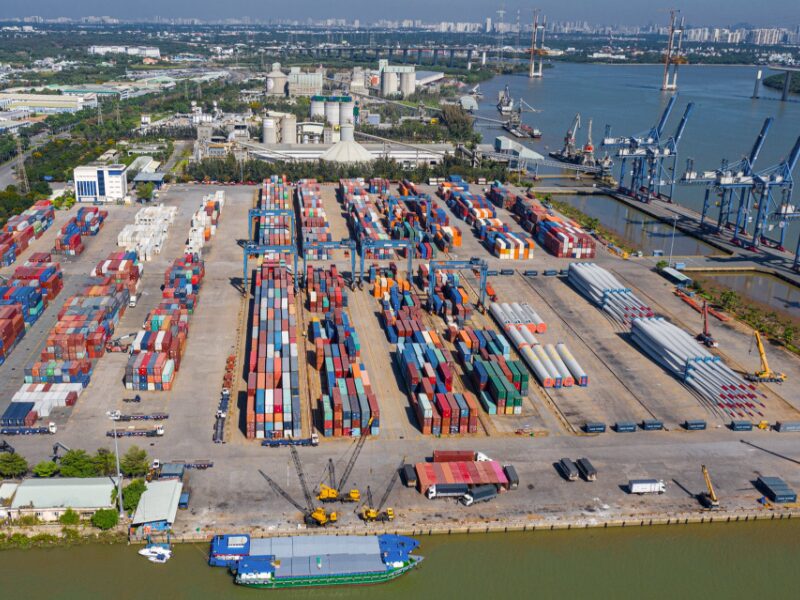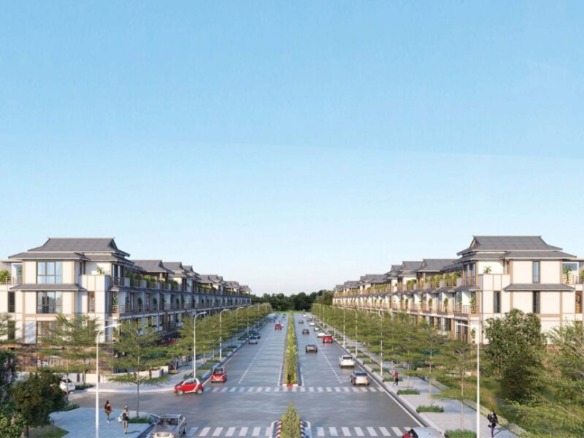Contents
Vietnam industrial real estate is on the rise. Seaports play a key role in this growth. They connect manufacturing hubs to global markets. As a result, areas like Hai Phong, Quang Ninh, Thanh Hoa, and Da Nang draw major tenants. This setup cuts supply chain times and transportation expenses. Consequently, Vietnam strengthens its spot on the international industrial map.
Seaports Drive Vietnam Industrial Real Estate Growth
Vietnam’s long coastline supports a vast port network. This foundation boosts exports and trade links. For instance, the Savills Global Occupier Insight report highlights how ports enhance competitiveness. In 2024, Vietnam’s ports handled 22 million TEUs. Growth continues into 2025. Moreover, infrastructure upgrades sync with logistics needs. Deep-water ports now feature warehouses and cold storage that meet global standards.
In the North, Lach Huyen port serves as a gateway for key economic zones. Similarly, Southern ports like Cat Lai and Cai Mep-Thi Vai link provinces to sea routes. Recent projects amplify this. The Can Gio transshipment port, approved in early 2025, involves over USD 1.96 billion in investment. Additionally, Lien Chieu port, set for 2025 completion, aids goods flow to the Central Highlands and beyond.
However, challenges persist. Some areas lack quality warehouses or multimodal links. Last-mile connections need more funding, especially in central regions. Despite this, opportunities abound for savvy investors.
Key Regions Benefiting from Port Advantages
Several locales stand out in Vietnam industrial real estate. Hai Phong leads with upgraded ports and efficient customs. Quang Ninh offers competitive costs and expanding services. Thanh Hoa and Da Nang follow suit, leveraging cross-border corridors.
- Hai Phong: Attracts tenants via direct sea access and logistics hubs.
- Quang Ninh: Gains from administrative changes, shortening supply chains.
- Thanh Hoa: Benefits from proximity to emerging industrial clusters.
- Da Nang: Connects to Laos and Thailand, enhancing regional trade.
These shifts reflect global trends. Manufacturers prioritize resilience and neutrality. Vietnam fits perfectly, with its growing consumer markets.
Insights and Market Data for Investors
Adding depth, recent data shows robust expansion. Vietnam’s industrial sector grew 8.07% in H1 2025, per national statistics. FDI drives this, amid the China+1 strategy. For example, JLL’s Q2 2025 report notes cautious absorption but new parks in the South.
Moreover, the commercial real estate market hit USD 16.61 billion in 2024. It projects a 13.80% CAGR through 2030. This aligns with GDP forecasts of 6.5-6.6% for 2025. Experts like Thomas Rooney from Savills emphasize logistics readiness over mere land availability.
In addition, geopolitical factors favor Vietnam. As tariffs rise elsewhere, investors seek stable spots. Thus, port-linked areas promise high returns.
Challenges and Future Outlook in Vietnam Industrial Real Estate
Uneven development poses risks. Inland spots may lag without better infrastructure. Yet, mergers of localities provide access to maritime trade. This streamlines processes and cuts costs.
Looking ahead, sustainable growth is key. Investors should focus on multimodal connectivity. Furthermore, government initiatives support this. For insights, review Cushman & Wakefield’s Vietnam reports, which analyze supply and demand trends.
Overall, Vietnam industrial real estate offers strong potential. Seaports amplify appeal, drawing foreign capital. With careful planning, this sector could lead Southeast Asia’s industrial boom.
Finally, for a broader view, explore Vietnam Briefing’s property outlook. It details FDI impacts and market dynamics.





Join The Discussion